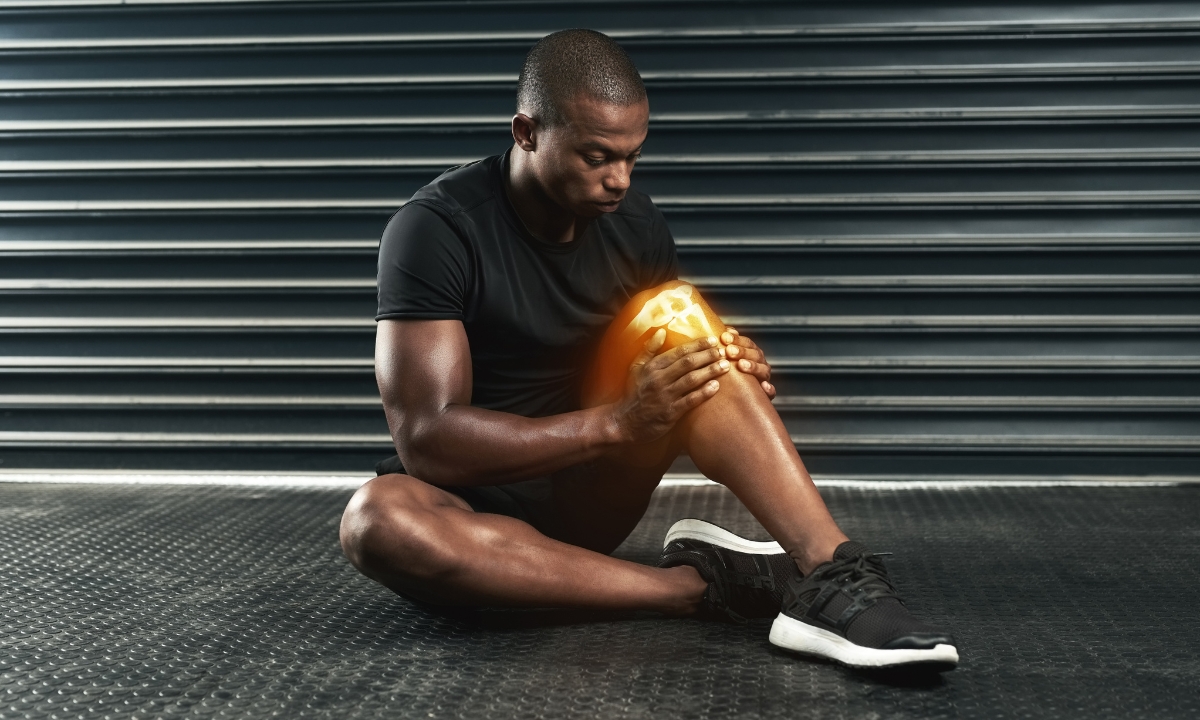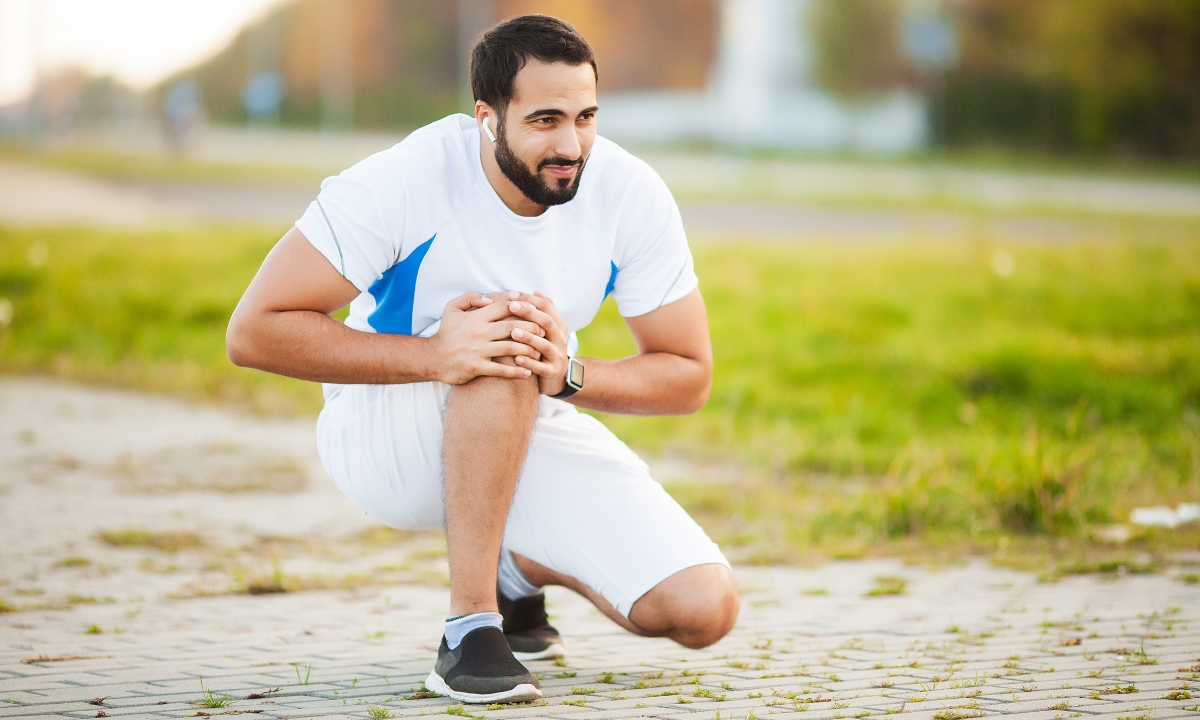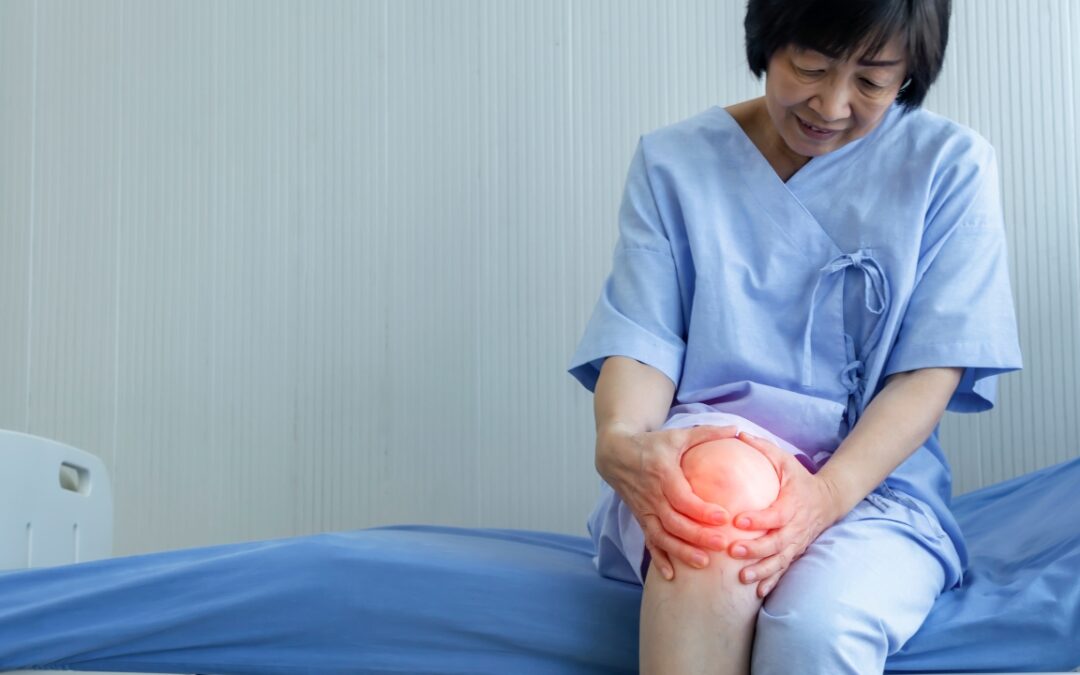“What I’ve learned from running is that the time to push hard is when you’re hurting like crazy and you want to give up. … Success is often just around the corner.” —James Dyson
Running offers a path to physical and mental well-being, but for many enthusiasts, the journey can be interrupted by pain. And often it is the pain of runner’s knee. This common condition, also known as patellofemoral pain syndrome (PFPS), manifests as pain around the kneecap and can sideline you from your training.
However, there is good news! Runner’s knee is can often be prevented and is treatable. In this article we intend to equip you with the knowledge to overcome this affliction and keep your runs smooth and pain-free.

Understanding the Terrain: Causes and Symptoms of Runner’s Knee
Runner’s knee arises from repetitive stress on the kneecap and surrounding structures. Think of it as imbalanced forces causing friction in the joint. Here are the culprits that can disrupt your running stride:
- Muscle Imbalances: Weak quadriceps or hip muscles can lead to improper tracking of the kneecap during running, causing irritation and pain.
- Tightness: Tight hamstrings and calves can restrict movement and place undue stress on the kneecap.
- Imperfect Form: Running with excessive foot strike force, poor posture, or overstriding can place significant strain on the knee joint.
- Sudden Increases in Training: Ramping up your mileage or intensity too quickly can overload your body and contribute to runner’s knee.
Symptoms of Runner’s Knee:
- A dull ache or a stabbing sensation around the kneecap.
- Pain that worsens with activities like running, squatting, or stair climbing.
- Tenderness to the touch around the kneecap.
- Creaking or popping sounds in the knee joint.
Building a Strong Foundation: Preventing Runner’s Knee
Prevention is the best medicine, and keeping runner’s knee at bay is no exception. Here are some proactive steps to fortify your running journey:
- Strength Training: Regularly strengthen your quadriceps, hamstrings, glutes, and core muscles. This creates a strong foundation for proper running form and reduces stress on your knees.
- Flexibility: Regularly stretch your hamstrings, calves, and hip flexors to improve your range of motion and prevent tightness from contributing to runner’s knee.
- Mastering Your Form: Analyze your running technique and correct any imbalances in your stride. Consider consulting a running coach or physical therapist for guidance.
- Gradual Progression: Increase your running distance and intensity gradually to allow your body to adapt to the demands of the sport. Avoid sudden jumps in mileage or intensity that can lead to overuse injuries.
- Finding the Perfect Fit: Choose running shoes that provide adequate cushioning and support for your specific foot type and running style. Consider visiting a specialty running store for personalized recommendations.
- Cross-Training: Incorporate low-impact activities like swimming, cycling, or yoga into your routine. This maintains your fitness level while giving your knees a break from the repetitive stress of running.
Navigating the Path to Recovery: Treating Runner’s Knee
Knee pain can often sidetrack runners, but it need not be the end of your running activities. And, while the pain can cause you to think you may never be able to run again, this need not be the case. As the National Institutes of Health’s National Library of Medicine notes in one article,
“If you have front knee pain, the first thing you need to do is rest the knee. Exercises to strengthen the knee, thigh and hip muscles can stabilize the kneecap and have been proven to relieve the pain. It’s also a good idea to pay attention to the position of your legs in everyday life.
Pain at the front of the knee – known as patellofemoral pain – is one of the most common knee problems. It often occurs in people who do a lot of sports, particularly runners. That’s why it’s also often referred to as ‘runner’s knee.’”
However, if you encounter runner’s knee, don’t despair! Here are some strategies to get you back on track:
- Rest and Recuperation: Allow your knee time to heal by reducing your running volume or taking a complete break, depending on the severity of your pain.
- Ice Therapy: Apply ice packs to your kneecap for 15-20 minutes at a time, several times a day, to reduce inflammation and pain.
- Pain Management: Over-the-counter pain relievers like ibuprofen or acetaminophen can help manage pain and inflammation.
- Physical Therapy: Physical therapy plays a crucial role in treating runner’s knee. Your therapist can assess your specific condition, address muscle imbalances, and develop a personalized exercise program to strengthen your muscles, improve flexibility, and restore proper running mechanics.
- Supportive Measures: In some cases, wearing a patellar strap or sleeve can provide additional support and stability to your kneecap.
When Should You Seek Professional Help?
If your symptoms persist despite conservative treatment measures, or if you experience significant pain or swelling in your knee, consult a healthcare professional or sports medicine specialist. They can perform a thorough evaluation and recommend appropriate treatment options, which may include further physical therapy, cortisone injections, or in rare cases, surgery.
Maintaining the Summit: Long-Term Management for Runner’s Knee
Once you’ve recovered from a flare-up of runner’s knee, it’s crucial to adopt long-term strategies to prevent future occurrences. Here are some key habits to keep your runs smooth:
- Maintain Strength Training: Regularly strengthening your key muscle groups remains essential for maintaining proper running form and reducing stress on your knees.
- Stretch Regularly: Stretching remains vital for maintaining good range of motion and reducing the risk of tightness contributing to runner’s knee.
- Warm Up and Cool Down Diligently: Always dedicate time to a dynamic warm-up before your runs to prepare your muscles for activity and perform static stretches after your runs to cool down and improve flexibility.
- Listen to Your Body: Pay close attention to any pain signals your body sends. If you experience discomfort during your run, modify your intensity or take a break to avoid exacerbating the problem.
- Recovery Tools: Utilize tools like foam rollers or massage guns to target tight muscles and promote overall recovery.
- Maintain a Healthy Weight: Excess weight places additional stress on your joints, including your knees. Maintaining a healthy weight can significantly reduce your risk of developing runner’s knee.
- Hydration is Key: Proper hydration is essential for optimal muscle function and recovery. Aim to drink plenty of water throughout the day, especially before, during, and after your runs.
- Cross-Training Endures: Continue incorporating low-impact activities like swimming, cycling, or yoga into your routine to maintain fitness and give your knees a break from the repetitive stress of running.
By following these preventative and treatment strategies, you can effectively conquer the challenge of runner’s knee and keep your runs smooth and pain-free. Remember, consistency is key. By integrating these practices into your training routine and lifestyle, you can significantly reduce your risk of future flare-ups and continue enjoying the discipline of running for years to come.
Note that this article is intended for informational purposes only and should not be interpreted as medical advice. It is always recommended to consult with a healthcare professional before starting any new exercise program or treatment plan, especially if you have any existing medical conditions.

Running Pain-Free With Pain and Performance Solutions
When dealing with chronic knee pain, the first step in recovery is when we get to know you and your pain issues. Once you make your first appointment, we’ll want to learn about your present discomfort as well as any history of pain. After providing you with a full examination, we can determine which form of treatment is needed to help you on your road to recovery.
Achieving chronic pain relief with therapies such as Anatomy in Motion (AiM) and Active Release Technique® can only begin when we can understand where your pain started. Your trust in us is key, as is your honesty. Ultimately, getting your body working properly and healthy is the only way to achieve total recovery.
So, don’t hesitate to reach out. We are here to help and will answer any, and all questions that you may have. Call us at (707) 636-4404 or fill out our online contact form.
